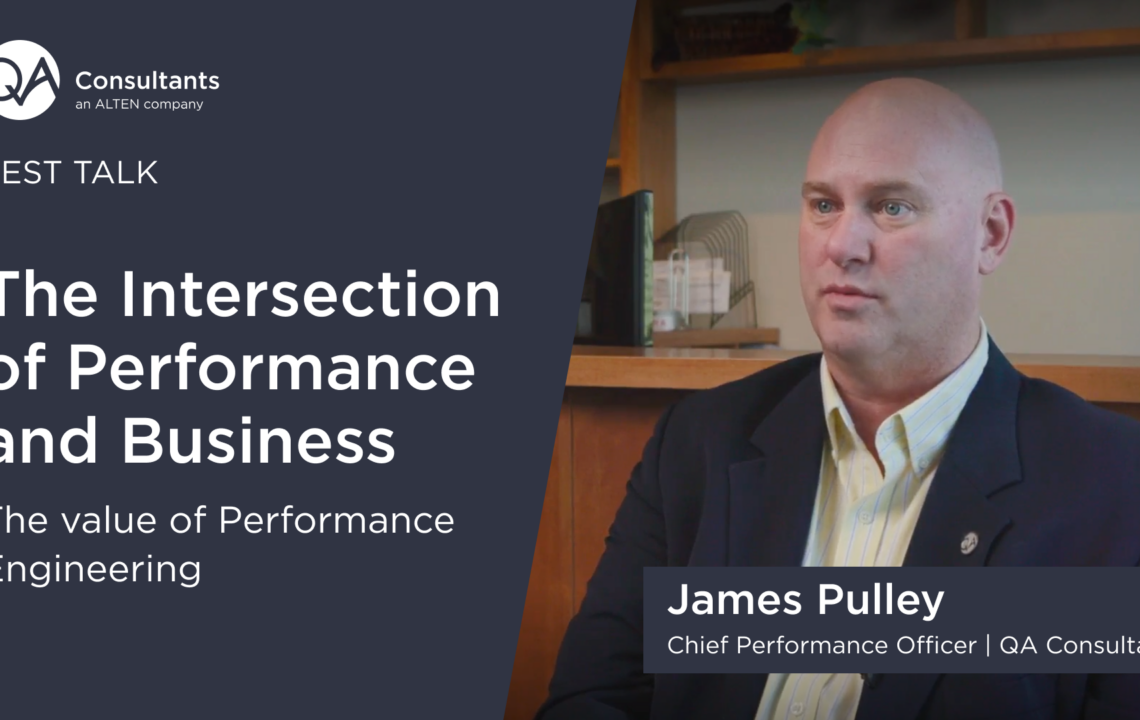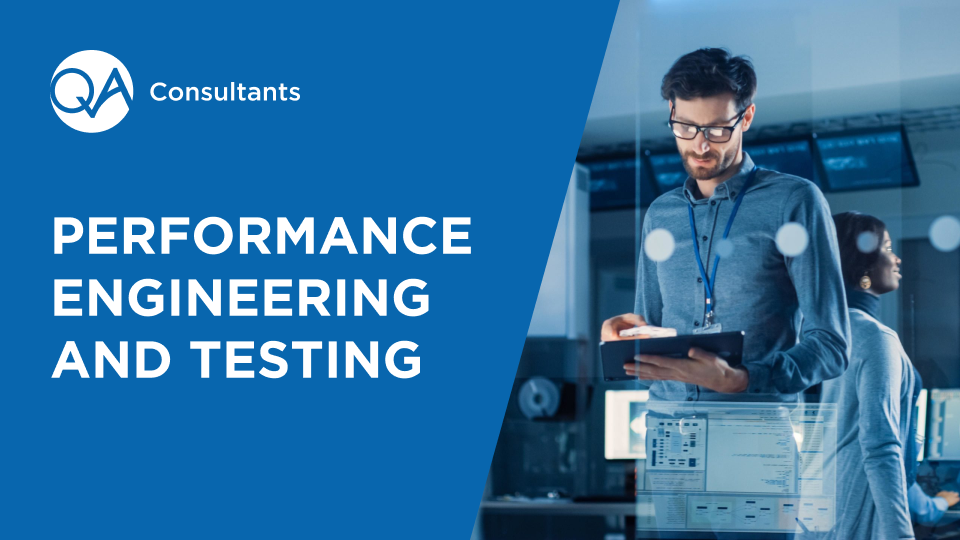
The Intersection of Performance and Business
The Value of Performance Engineering
Hear from James Pulley, Chief Performance Officer at QA Consultants, explain how we help customers improve the efficiency, scalability, and responsiveness of applications through Performance Engineering. Better performing applications mean lower hosting costs.
How We Measure Value:
Changes to the system that improve efficiency, scalability, response time and cost.
The Coinbase problem was completely avoidable. And all of this is predictable. We can actually take a look at the output of the websites, the logs, the machine data and we can provide insight into how scalable that site is and how effective those site developers are.
If you have a poor performing application, you will pay a lot more to host it. And that really is that intersection between performance and business. Value in a performance engineering context is when we make a change to the system that improves its efficiency, its scalability or response time or cost. We can begin with requirements. We can ensure that any business needs for performance are captured upfront in the design process.
Does it scale for one? Even at a unit test level? We load up the system with what looks like users. We capture response times. We capture measurements of system resources. We’re able to identify bottlenecks in the system or opportunities to improve efficiencies.
By making it scale for one –that is, it meets all response time criteria for a single user, you will solve about 80% of the scalability problem because you’ll find the poor performing queries. You will find the bad page design that downloads 500 elements of 25 megabyte files.
We will help customers engage in contract negotiations with SaaS providers. We will help their development organizations become more efficient and educate them on what drives poor or good performing applications. We will help traditional QA shops both in the functional and the classical multiuser performance stages. And we will carry this all the way through operations into platform engineering, monitoring and capacity planning for full lifecycle for an application.
I look at it from a time to value perspective and that value decision at the end is how long does it take for me to make a decision on how to improve system efficiency?

Chief Performance Officer
For the past 30 years, James has been helping customers improve both the responsiveness and the scalability of software. He has held positions with TEK Global Services, NewCOE, PowerTest, Mercury Interactive, Microsoft, Ganymede Software, and Gigalabs (supercomputing infrastructures).


